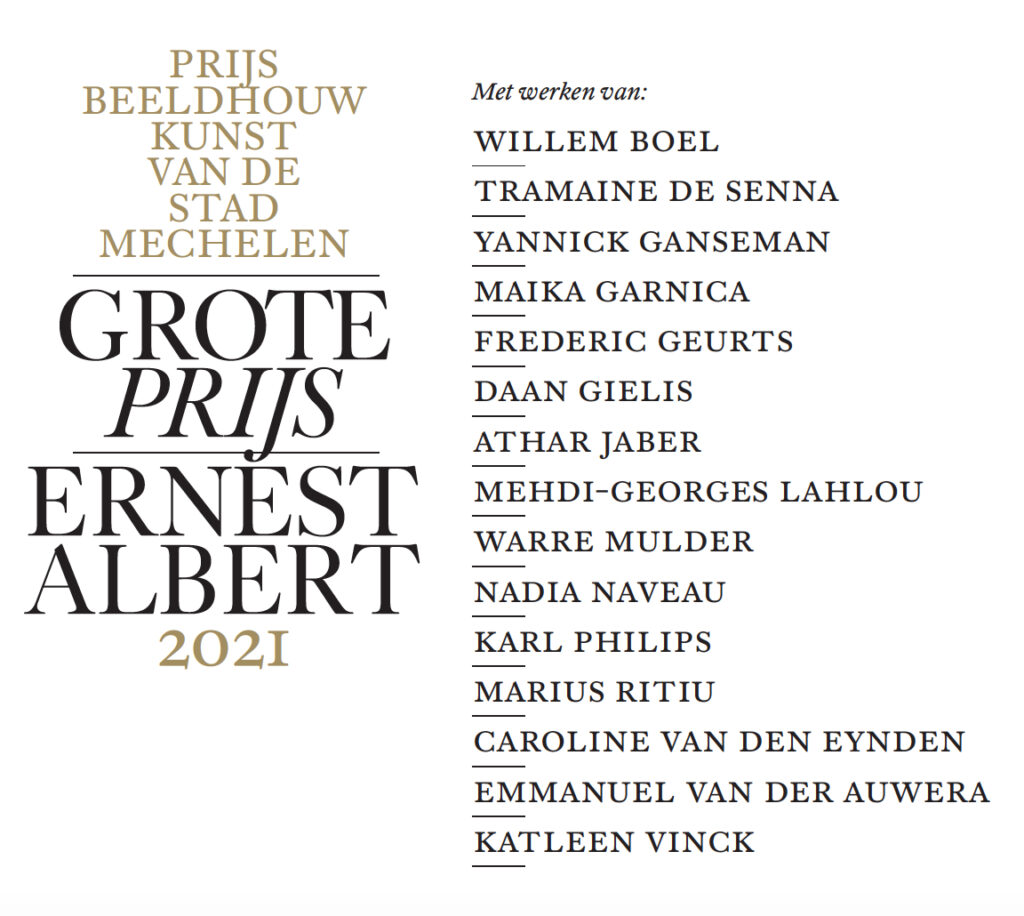Mehdi-Georges Lahlou in Grote Prijs Ernest Albert, Mechelen

20.03 – 25.05.2021
in De Garage – Ruimte voor Actuele Kunst, Onder-Den-Toren 12, 2800 Mechelen.
De tentoonstelling is toegankelijk van maandag tot zondag van 13 tot 18u (gesloten op woensdag)
Reserveer uw bezoek op: https://hofvanbusleyden.recreatex.be/Exhibitions/Overview Meer info hier.
De Grote Prijs Ernest Albert is een organisatie van het Comité Ernest Albert
in samenwerking met de Stad Mechelen, De Garage/Hof van Busleyden en de Academie Mechelen
INFO: 015 28 29 90 – ernest.albert@mechelen.be – www.prijsernestalbert.be

From the Balcony, 72 Virgins and the Oasis (2020)
In From the Balcony, 72 Virgins and the Oasis, Mehdi-Georges Lahlou confronts us with a full range of sensations: the colorful fluttering of scarves, the sounds of birdsong undercut by a hard-to-pin-down ominous noise, the verdant green of a palm tree soaring overhead, the persistent rush of wind, and the firm rigidity of wooden scaffolding. Decorated with scarves hanging from laundry racks, this scaffolding becomes reminiscent of apartment balconies that face outward into the street in urban environments. In such a way, this balcony positions us on the outside looking toward an implied domestic interior space that does not, in fact, exist. It is imagined. Consistent with his practice, Mehdi-Georges’ takes us to an elsewhere that is both here and not here.
72 Virgins, as a motif, is something Mehdi-Georges Lahlou has returned to numerous times. The virgin is a common Western mistranslation of the word houri—or, more accurate to Arabic transliteration, ḥūr. Houri are the wonderous and beautiful companions promised to the Muslim faithful in the Quran. This Western mistranslation immediately sets up a binary between the virtuous and everlasting virginity of the Madonna against the tempting sensuality of the houri. What these ambiguous beings are, however, is debated even in Islamic interpretation. They are mentioned directly in the Quran only four times (44.54, 52.20, 55.72, 56.22). In their reformist translation of the Quran, Edip Yüksel, Layth Saleh al-Shaiban, and Martha Schulte-Nafeh note that ḥūr “means intelligent, pure, dazzling friend; male or female. Words derived from the same root mean back and forth conversation.” Symbols of paradise, houri are elsewhere beings that elude clear definition. They are magical.
But where are the houri in Mehdi-Georges’ immersive installation? He has left them tethered to the balcony and strewn across the ground in the form of knock-off designer scarves made in China. In typical fashion, Mehdi-Georges Lahlou presents us with an image of absurdity that is resonate with many possible meanings. On one level, the arrangement of these cheaply-made scarves on a balcony invokes class. Drying laundry, rather than pristine, sparsely adored architecture, signals that this balcony is home to working-class people—in this case, Muslims. On another, though, it points to the plurality of Muslim fashion, mixing the secular with the religious. To source these scarves, Mehdi-Georges asked 72 women to pick a scarf out of a catalog, one that they would wear to janna, or the garden of paradise. His very question forces a decision: either to conform and enter paradise, or reject the scarf and thereby janna all together. Did these women know what decision Mehdi-Georges was leading them to make? The scarves, then, represent a concession, and perhaps also a riposte, to one idea of paradise, just as the printed words speak for those who rejected this vision of heaven as being not theirs and not for them.
Let us not forget the palm tree, a symbol of paradise but also of climates much warmer than here. It does not belong. It is a towering reminder that Mehdi-Georges Lahlou has magically transported us to a paradisal elsewhere, leaving us uncertain if this is where we desire or dread to remain.
Text by Conor Moynihan
Sound Creation by Ève Ganot
From the Balcony, 72 Virgins and the Oasis is realized thanks to the support of Maison d’Art Actuel des Chartreux (MAAC) Special thanks to Romy Finke, Ron Bernstein, Anne Vangronsvield and the whole Jan Van Eyck Academie team without who have helped bring this project to light.

